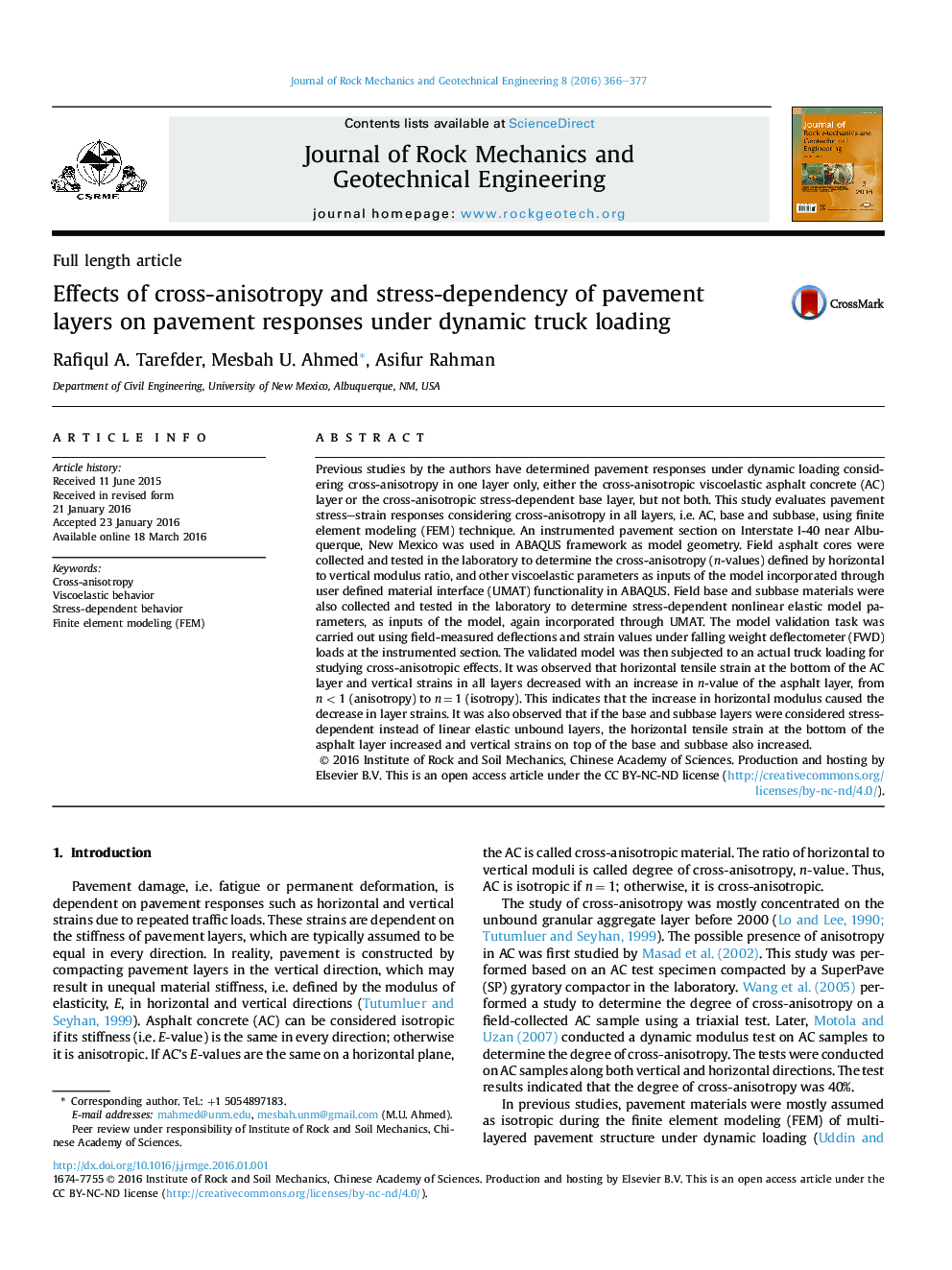| کد مقاله | کد نشریه | سال انتشار | مقاله انگلیسی | نسخه تمام متن |
|---|---|---|---|---|
| 286491 | 509484 | 2016 | 12 صفحه PDF | دانلود رایگان |
Previous studies by the authors have determined pavement responses under dynamic loading considering cross-anisotropy in one layer only, either the cross-anisotropic viscoelastic asphalt concrete (AC) layer or the cross-anisotropic stress-dependent base layer, but not both. This study evaluates pavement stress–strain responses considering cross-anisotropy in all layers, i.e. AC, base and subbase, using finite element modeling (FEM) technique. An instrumented pavement section on Interstate I-40 near Albuquerque, New Mexico was used in ABAQUS framework as model geometry. Field asphalt cores were collected and tested in the laboratory to determine the cross-anisotropy (n-values) defined by horizontal to vertical modulus ratio, and other viscoelastic parameters as inputs of the model incorporated through user defined material interface (UMAT) functionality in ABAQUS. Field base and subbase materials were also collected and tested in the laboratory to determine stress-dependent nonlinear elastic model parameters, as inputs of the model, again incorporated through UMAT. The model validation task was carried out using field-measured deflections and strain values under falling weight deflectometer (FWD) loads at the instrumented section. The validated model was then subjected to an actual truck loading for studying cross-anisotropic effects. It was observed that horizontal tensile strain at the bottom of the AC layer and vertical strains in all layers decreased with an increase in n-value of the asphalt layer, from n < 1 (anisotropy) to n = 1 (isotropy). This indicates that the increase in horizontal modulus caused the decrease in layer strains. It was also observed that if the base and subbase layers were considered stress-dependent instead of linear elastic unbound layers, the horizontal tensile strain at the bottom of the asphalt layer increased and vertical strains on top of the base and subbase also increased.
Journal: Journal of Rock Mechanics and Geotechnical Engineering - Volume 8, Issue 3, June 2016, Pages 366–377
